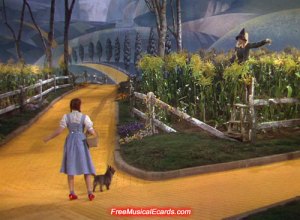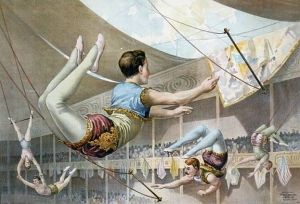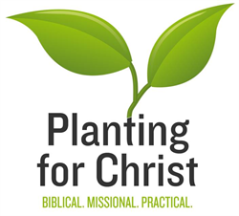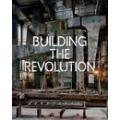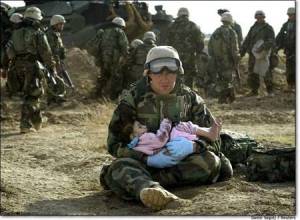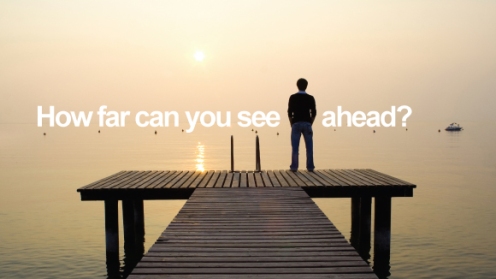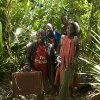Andrew Wilson, If God Then What? Wondering aloud about truth, origins, and redemption (Nottingham: IVP, 2012)
A colleague of mine asked me to read this book and tell her what I thought of it. I am glad she did and glad I did. This is a delightful book: by delightful I mean it ‘gladdens’, ‘pleases’, and ‘rewards’. It is a delightful book about Christian faith and how one might go about commending Christian faith to contemporary people (in this sense, apologetics).
First, I liked his writing style. Andrew Wilson writes with clarity and charm. Clearly, he knows his stuff, has read widely; but he also communicates complicated things clearly. I got his point. He does so with charm. His style is conversational – I could easily imagine discussing things with him over a coffee or a glass of red wine or a Guinness (he likes these he tells us). He has a splendid sense of humour. In his prose he raises questions, admits complexity, acknowledges he hasn’t proven everything, and anticipates possible objections. Wilson sounded neither arrogant nor simplistic. Avoiding either is a hard task nowadays.
This is because, second, he understands well what many contemporary western people think (or don’t think as he argues). Putting it this way sounds cliché. What I mean is: he employs logic and expresses an appreciation for scientific method; but he also recognizes that logic goes only so far. Equally, Wilson readily acknowledges some of the foolish, even wrong, things Christians have done in the past and do in the present. What this adds up to is the sense that Wilson could easily relate to people’s questions and they, in turn, could appreciate the tone in which he responds.
Third, I appreciated Wilson’s approach in the second half of the book. I didn’t expect it. Wilson puts forth a clear historical evidence case for the Resurrection (he contrasts NT Wright with Geza Vermes). I tend to be nervous with the approach that says, ‘here is the historical evidence that proves the event.’ This has always struck me as a bit reductionist and modernist (as if evidence alone does the trick of persuading). Wilson, however, takes the same evidence but asks questions about what ‘evidence’ means and, more importantly, what constitutes ‘proof’. He also (brilliantly, in my opinion) works backwards from the Resurrection of Jesus. In other words, he asks the ‘so what?’ question: if the bodily resurrection and appearances of Jesus are the best explanation of the empty tomb what are the implications and consequences – both positively (it means this) and negative (it nullifies this).
Finally, and I realise some will be disappointed with me, Wilson didn’t directly argue his case by citing lots of Scripture. Please, bear with me here: behind all his points stands the testimony of the Bible. In his discussion of Jesus’ resurrection and empty tomb his method clearly appeals to the Bible’s witness (including a textual fragment in Dublin). But methodologically Wilson wants to begin with a priori presuppositions and ask questions about these presuppositions — both his readers and those of his own. Now I understand why some will baulk at this method. I am going to go out on a limb here and choose to believe Wilson would continue beyond this book to thinking about the Bible and how someone could read the Bible.
For whom, then, is this book? Anyone – Christian, sceptic, atheist or whatever – who wants to think will manage this book. Wilson wears his background reading lightly but avoids giving Christianity-lite. I am glad my colleague asked me to read this. I am glad I read this little book.
In between: neither at the beginning nor at the end. I am somewhere, where exactly I am not entirely sure. I completed my latest season of ministry: 7 years here in London, serving wonderful people whom I love dearly. I am preparing to move on to the next ministry in Sevenoaks, Kent. I am confident we will serve other wonderful people there. But I am not there yet. I am somewhere in between.
There is a constellation of emotions. There are a myriad of thoughts. I am grateful: supremely to the Lord God for so many mercies and evidences of his extraordinary kindnesses. I am thrilled: in these years I witnessed gospel grace in many people’s lives. I am humbled: in my marriage, in my parenting, in my work, and in my private world. I am confused: about a few of the events, relationships, and work that right now don’t have the desired feel. I am hopeful: for the people I know, for what this next season will bring, and for what I cannot see and discern.
This feeling of being somewhere in between is intensified as I say goodbye to people and communicate with other people whom I will meet very shortly. I am ending some practical things. I am initiating some practical things elsewhere. But things are different. There are various ‘last times’. Places even look different somehow. There is termination. There is also anticipation.
I wonder if this in between thing is what trapeze artists experience. For that brief moment when they let go of one trapeze and reach out for the other trapeze swing it looks to us that for a moment nothing is happening. But lots of happenings are occurring. There is movement. There is momentum. There is the rush of air.
This makes me pause, then, for a moment, and realise that being in between is OK. There is movement. There is momentum. The really great thing is that the cause, the author, of the in between time is the same God who was faithfully working in our lives these past 7 years. He is the cause, the author, of the life we will soon live in Sevenoaks. In fact, for Him, there is no in between time. There is no sense of pause, uncertainty, of indrawn breath.
Perhaps, what I should try to do is to avoid rushing through the in between time. Maybe the in between is an opportunity to realise some important things. I am not meant to speed through my life from one thing to the next. I am intended to appreciate the here and now and not live either in nostalgia or future planning. I am not the Captain of my life. I live a dependent life. Possibly, one gift of the in between time is the gift of seeing what was in such a way as to provide a good line of sight for the future.
I read this poem by the English poet, George Herbert. I am going to use it for this ‘in between’ time.
My words and thoughts do both express this notion, That Life hath with the sun a double notion. The first Is straight, and our diurnal friend, The other Hid and doth obliquely bend. One life is wrapped In flesh, and tends to earth: The other winds towards Him, whose happy birth Taught me to live here so, That still one eye Should aim and shoot at that which Is on high: Quitting with daily labour all My pleasure, To gain at harvest an eternal Treasure.
Yesterday, I attended a church planting conference here in London. Probably around 120 people attended. We listened to some good talks and presentations. The music was excellent! It was a delight to catch up with friends from different parts of the country engaged in gospel ministry.
The highlight for me was not the talks: not because any of them were deficient, simply that they contained the same content as last year’s conference. The highlight for me, the encouragement for me, was the unity in Christ evidenced.
There were men and women, the young hipsters and a few of us oldies, Anglican evangelicals, Free Church folk, and church planters from various networks each of which has its own theological distinctive within the spectrum of evangelical theology. Even more striking was the diversity of ministry contexts. There were church planters aiming to work in middle class areas as well as those working within urban settings, council estates and ethnic communities. This was not a conference of mono-chrome evangelicals!
And the most striking (for me and for others with whom I spoke) was the racial diversity among us — none of which was planned, orchestrated or managed! In our plenary sessions, sure, the majority of us were white; at the same time, there was a significant number of black church planters and Korean gospel workers. In one seminar I attended it was stimulating to hear one black church planter speak of the need to ‘contextualise’ reformed/evangelical theology into the various black contexts. He expressed his desire with no trace of criticism and the other seminar attendees agreed with no trace of patronising guilt.
What I was impressed with by all of this was how, humanly speaking, none of this unity in diversity was contrived. Ultimately, I think (I chose to believe) it was a work of the Lord. He brought us together, under his word, for the gospel of Christ, for the welfare of the church in our country and all for his glory. Having the opportunity to witness this was one of those unexpected but awe-filled moments.
Yesterday, a good friend and I went to the Royal Academy of Art to view the exhibition ‘Building the Revolution: Soviet Art and Architecture 1915-1935’. This exhibition ends on 22 January 2012. If you have the opportunity, do go along and catch this.
What made this visit especially interesting was my friend’s personal experiences. He has been living and working in Eastern Europe for over 35 years. He traveled throughout the Soviet Union in the bad, old, dark days of the 70s and 80s — sometimes with James Bond-like experiences with the KGB. After the fall of the Soviet Empire he and his family lived in a former Soviet-block country. All this to say, as we looked at architecture he would frequently comment from his own visits to the sites in Moscow. I had a tour guide with me.
What especially struck us was the irony of the exhibition. An irony ignored by the audio guide and the curators’ comments.
After the Russian Revolution, with the encouragement of Lenin and the new Bolshevik regime, Russian, Ukranian, Georgian and other artists sought to promote a radical ‘constructivist’ style. In opposition to the former European belle epoche contructivists aimed for a number of features: the so-called avant garde along with what one commentator identifies as ‘abstraction, pop art, op art, minimalism, abstract expressionism, the graphic style of punk and post-punk, to brutalism, postmodernism, hi-tech and deconstructivism.’ (see http://www.guardian.co.uk/artanddesign/2011/nov/04/russian-avant-garde-constructivists). They also sought to promote art as an instrument of construction: namely, to assist in the building/construction of a worldview experiment. Art would not be an expression of the natural or the real. Art would be the construction of an ideal: social equality, the excellence of the worker and the supremacy of the Revolution.
Without doubt, some of the photographs of buildings, paintings and drawings are fascinating, intriguing and communicative. The curators and commentator on the audio guide were, in one sense, right to wax lyrical about this era. A fascinating experiment did truly take place. But, in my opinion, there is a huge irony to all of this.
First, to call this Soviet or even Russian art is somewhat misleading. Those at the forefront of this movement(s) were not yet Soviets (for they preceded the Revolution). Equally, they weren’t only from Russia. More significantly, the movement (so the curators point out) were indebted to other European influences — notably the French architect Le Corbusier. At various points along the way, I couldn’t help but think the so-called Russian avant-garde was neither fully Russian nor avant-garde.
Second, one example leaped out to me in particular. It was a radio tower meant to express the new State’s abilities and resources. The original plan was to build the tower taller than the Eiffel Tower in Paris (some 350 metres tall). Yet this radio tower in Moscow: had no actual foundation and ran out of material at around 150 metres. In short, the tower came short of its’ goal. Yet no mention of this ‘failure’ or incompleteness was made!
Third, and most striking of all to my friend and me, was the undeniable state of rot and disintegration of the buildings as seen in the many photographs! Every building was clearly crumbling and in poor condition. Yes, Stalin eventually crushed the experiments and commanded a return to neo-classical architecture. He put a stop to the constructivists. But, equally, time alone and the end of the Soviet Empire has reduced things to an ironic deconstruction. One former building, originally intended for a workers’ co-operative headquarters is currently being converted to become ’boutique apartments’ for the wealthier Muscovites.
What troubled me is that at no point in the audio guide did any commentator point out the failure of this movement. The movement may well have been experimental, radical and impressive. Yet there was in all of this a sense (as my friend aptly put it) of a dehumanisation of space and perspective on the basis of what was an anti-human ideology.
I don’t mean my comments to tout some ‘triumph of the West’. I certainly don’t prize today’s styles of narcissistic and consumerist expression. I do commend the RA for putting on this exhibition. I only wish greater attention was given to the ironic failure.
Op-Ed Columnist
The End, for Now
By THOMAS L. FRIEDMAN
Published: December 20, 2011
With the withdrawal of the last U.S. troops from Iraq, we’re finally going to get the answer to the core question about that country: Was Iraq the way Iraq was because Saddam was the way Saddam was, or was Saddam the way Saddam was because Iraq is the way Iraq is — a collection of sects and tribes unable to live together except under an iron fist. Now we’re going to get the answer because both the internal iron fist that held Iraq together (Saddam Hussein) and the external iron fist (the U.S. armed forces) have been removed. Now we will see whether Iraqis can govern themselves in a decent manner that will enable their society to progress — or end up with a new iron fist. You have to hope for the best because so much is riding on it, but the early signs are worrying.
Iraq was always a war of choice. As I never bought the argument that Saddam had nukes that had to be taken out, the decision to go to war stemmed, for me, from a different choice: Could we collaborate with the people of Iraq to change the political trajectory of this pivotal state in the heart of the Arab world and help tilt it and the region onto a democratizing track? After 9/11, the idea of helping to change the context of Arab politics and address the root causes of Arab state dysfunction and Islamist terrorism — which were identified in the 2002 Arab Human Development Report as a deficit of freedom, a deficit of knowledge and a deficit of women’s empowerment — seemed to me to be a legitimate strategic choice. But was it a wise choice?
My answer is twofold: “No” and “Maybe, sort of, we’ll see.”
I say “no” because whatever happens in Iraq, even if it becomes Switzerland, we overpaid for it. And, for that, I have nothing but regrets. We overpaid in lives, in the wounded, in tarnished values, in dollars and in the lost focus on America’s development. Iraqis, of course, paid dearly as well.
One reason the costs were so high is because the project was so difficult. Another was the incompetence of George W. Bush’s team in prosecuting the war. The other reason, though, was the nature of the enemy. Iran, the Arab dictators and, most of all, Al Qaeda did not want a democracy in the heart of the Arab world, and they tried everything they could — in Al Qaeda’s case, hundreds of suicide bombers financed by Arab oil money — to sow enough fear and sectarian discord to make this democracy project fail.
So no matter the original reasons for the war, in the end, it came down to this: Were America and its Iraqi allies going to defeat Al Qaeda and its allies in the heart of the Arab world or were Al Qaeda and its allies going to defeat them? Thanks to the Sunni Awakening movement in Iraq, and the surge, America and its allies defeated them and laid the groundwork for the most important product of the Iraq war: the first ever voluntary social contract between Sunnis, Kurds and Shiites for how to share power and resources in an Arab country and to govern themselves in a democratic fashion. America helped to midwife that contract in Iraq, and now every other Arab democracy movement is trying to replicate it — without an American midwife. You see how hard it is.
Which leads to the “maybe, sort of, we’ll see.” It is possible to overpay for something that is still transformational. Iraq had its strategic benefits: the removal of a genocidal dictator; the defeat of Al Qaeda there, which diminished its capacity to attack us; the intimidation of Libya, which prompted its dictator to surrender his nuclear program (and helped expose the Abdul Qadeer Khan nuclear network); the birth in Kurdistan of an island of civility and free markets and the birth in Iraq of a diverse free press. But Iraq will only be transformational if it truly becomes a model where Shiites, Sunnis and Kurds, the secular and religious, Muslims and non-Muslims, can live together and share power.
As you can see in Syria, Yemen, Egypt, Libya and Bahrain, this is the issue that will determine the fate of all the Arab awakenings. Can the Arab world develop pluralistic, consensual politics, with regular rotations in power, where people can live as citizens and not feel that their tribe, sect or party has to rule or die? This will not happen overnight in Iraq, but if it happens over time it would be transformational, because it is the necessary condition for democracy to take root in that region. Without it, the Arab world will be a dangerous boiling pot for a long, long time.
The best-case scenario for Iraq is that it will be another Russia — an imperfect, corrupt, oil democracy that still holds together long enough so that the real agent of change — a new generation, which takes nine months and 21 years to develop — comes of age in a much more open, pluralistic society. The current Iraqi leaders are holdovers from the old era, just like Vladimir Putin in Russia. They will always be weighed down by the past. But as Putin is discovering — some 21 years after Russia’s democratic awakening began — that new generation thinks differently. I don’t know if Iraq will make it. The odds are really long, but creating this opportunity was an important endeavor, and I have nothing but respect for the Americans, Brits and Iraqis who paid the price to make it possible.
Yesterday, Janet and I attended a lunch time concert performed by Goldsmiths (University of London) Chamber Choir. Our middle daughter sang a lovely solo. The two pieces were Anton Bruckner’s Motets and Benjamin Britten’s Ceremony of Carols.
In Britten’s work he uses some anonymous 15th and 16th centuries poems from The English Galaxy of Shorter Poems. Two pieces specially struck me with the beauty of paradox and irony. Paradox is defined as a seemingly contradictory statement that, nevertheless, may be true. Irony is defined as the expression of one’s meaning by using language that normally signifies the opposite. When used well, paradox and irony can create the truly beautiful and the the beautifully true.
Two poems stand out, in my opinion. First, ‘This Little Babe‘
This little Babe so few days old, is come to rifle Satan’s fold;
All hell doth at his presence quake, though he himself for cold do shake;
For in this weak unarmed wise the gates of hell he will surprise.
With tears he fights and wins the field, His naked breast stands for a shield;
His battering short are babish cries, His arrows looks of weeping eyes,
His martial ensigns Cold and Need, and feeble Flesh his warrior’s steed.
His camp is pitched in a stall, His bulwark but a broken wall;
The crib his trench, haystacks his stakes; of shepherds he his muster makes;
And thus, as sure his foe to wound, the angel’s trumps alarum sound.
My soul, with Christ join thou in fight; stick to the tents that he hath pight.
Within his crib is surest ward; this little Babe will be thy guard.
If thou wilt foil thy foes with joy, then flit not from the heavenly Boy.
And these expressions from ‘In Freezing Winter Night‘
This stable is a Prince’s court, this crib his chair of State;
The beasts are parcel of his pomp, the wooden dish his plate.
The persons in that poor attire His royal liveries wear;
The Prince himself is come from heaven; This pomp is prized there.
With joy approach, O Christian wight, Do homage to thy King,
And highly praise his humble pomp, which he from Heaven doth bring.
These paradoxes and ironies (hopefully, you spot them) remind me of those other lines by Emily Dickinson:
Tell all the Truth but tell it slant—
Success in Cirrcuit lies
Too bright for our infirm Delight
The Truth’s superb surprise
As Lightening to the Children eased
With explanation kind
The Truth must dazzle gradually
Or every man be blind—
In the Incarnation of our Lord Jesus Christ and, supremely, in his agonising death on a Roman Cross, Truth-in-Person, in superb surprise, comes to us. The paradox and irony are means he often employs so as ‘to dazzle gradually’. But one day He will return in dazzling glory! Take the paradox and irony to heart now.
Do take a look at this and consider joining in the protest at what seems to be a outrageous EU policy!
The waste of dwindling resources is shocking! Hugh Fearnley-Whittingstall’s campaign is worth supporting.
Recently, two events coincided: the first left me bemused, the second left me enthused.
The first concerned a health matter. The past two weeks have not been fun: I had a bout with a horrid stomach ‘flu (and, for female readers, this wasn’t “man ‘flu”). My doctor is a family friend. She was visiting my wife one evening and, in passing, asked how I was feeling. I answered in a typical bloke fashion: I gave her all the details! She wasn’t fazed. What she went on to say, however, fazed me. She recommended that I receive the “‘flu shot”. I responded, “Huh. But isn’t it currently reserved for vulnerable people and the elderly?” My doctor (did I say she is a family friend?!) looked me straight in the eye and said, “Yes.”
The second concerned a much younger guy. For the past four years I have met with him from time to time. I have spoken at a few meetings he’s arranged. One of the many projects he’s been working on is his first book. He asked me to read the first draft; our friendship could have fallen apart due to the comments I made about the manuscript. To his credit he took the criticism on the chin and kept going. We continued to meet up occasionally for lunches and some superb coffee.
This week I read his revised book manuscript. I was thrilled: but not because he incorporated anything I had earlier suggested. Instead, I was thrilled to see a younger man’s written work mature. This book, I anticipate, will be hugely important and helpful to readers. But, again, it had nothing to do with me. And, for one of those rare moments, I experienced a joy — a joy in another’s good work by the Lord’s grace and enabling. I found myself wanting to give a punch in the air victory cheer. If I could have done one of those footballer flips or rugby player’s slide — without putting my back out or bruising my shins — I would have done so. It is a joy to experience unalloyed happiness in another’s labours under God.
Which makes me think that such joy is precisely what an older person should have when watching younger friends and colleagues. Surely, one of the tasks of a pastor upon reaching a certain age and stage in ministry is to train, encourage and, then, take joy in younger workers. To be sure, there are inevitable dissapointments and hurts (all around). There is risk. On the other hand, to take the SAS saying in a different direction, ‘He who shares wins’. Better, as King David put it:
3 Great is the LORD and most worthy of praise;
his greatness no one can fathom.
4 One generation commends your works to another;
they tell of your mighty acts.
5 They speak of the glorious splendor of your majesty—
and I will meditate on your wonderful works.
6 They tell of the power of your awesome works—
and I will proclaim your great deeds.
7 They celebrate your abundant goodness
and joyfully sing of your righteousness.Psalm 145: 3 — 7
I’ll gladly take more of this experience at my ‘certain age’. The jury is still out about the ‘flu shot.
This film was a delightful surprise to me. I hadn’t heard much about it until I read a prompting from the always helpful and insightful Damaris Media Nick Pollard on Africa United.
The plotline involves an almost Chaucer-like collection of young people trying to make their way to the 2010 World Cup in South Africa. Their exploits are both comic and poignant. It is this feature above all that intrigued me. The story is able to capture some of the horrors of AIDS, child-soldiers and the sex trade without either sentimentality or soap box lecturing.
The acting is delightful and the tight photography, in my opion, captured the actors’ skills.
Don’t miss this film if you have the chance. For fuller and better details, click the link above at Damaris, for information.
If you like words and languages, you might find the following link enjoyable. I confess to recognising only two of the words.

